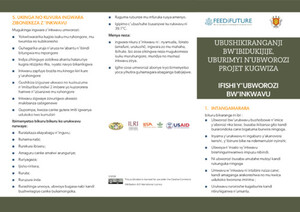
Modeling lactation curve and comparison of models fitness to different lactation data of indigenous and crossbred cows
Abstract
Five lactation curve models were compared for their fitness to milk data of indigenous and crossbred cows using data from Bako Agricultural Research Center and Debre Zeit Research Station. The fit of the models was compared using the model Rz value. The overall mean RZ value was 81.5 t 0.12% and was significantly (p < 0.001) affected by model type, data type, sire breed, parity, calving season and year, location and the interactions of model type with these fixed effects. The mean Rz values for the Incomplete Gamma with two parameters (IG ('n = 1)), Inverse polynomial (IP), Exponential, Incomplete Gamma (IG (b * 1)) and Parabolic exponential models were 90.1 t 0.26, 90.2 t 0.26, 67.2 t 0.28, 74.7 t 0.26 and 77.8 t 0.26 percent, respectively. Higher values of RZ were obtained for the Debre Zeit (80.5 %) herd than Bako. The sire breeds Friesian (81.6%) crosses had significantly the highest RZ value compared to the other sire breeds. Cows that calved during Arfasa (83.4%) had a higher fit than those in other calving seasons. Among the data types considered, highest R2 was observed for monthly mean (85.6%) and monthly total (85.6 %) milk data types. Besides, cows in the sixth parity (81.3 %) and those that calved in 1993 (84.5 %) had the highest Rz value. The highest Rz was obtained for IP fitted to monthly mean (95.4 %) and monthly total (95.4 %) milk data followed by the IG (b = 1) fitted to monthly mean (93.2 °h) and monthly total (93.2 %) milk data types. The IP followed by IG (b = 1) fitted to milk data of the crossbreds had the highest R2. The reverse is true for the indigenous breeds. Among the model type X parity, model type X season and model type X location interaction groups, the IP followed by IG (b =1) had the highest Rz for all parities, calving seasons and locations. From this study it can be concluded that both the IP and IG (b=1) had the best fit and could be used to describe the lactation curves of both zebu and crossbred cows under study.
Citation
Ethiopian Journal of Animal Production;3(1): 53-69









